Central Asia – Turkmenistan - Merv
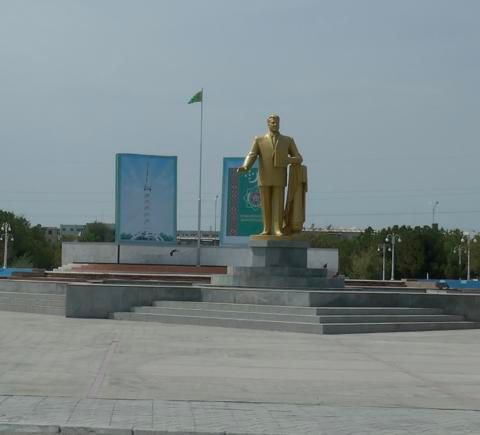
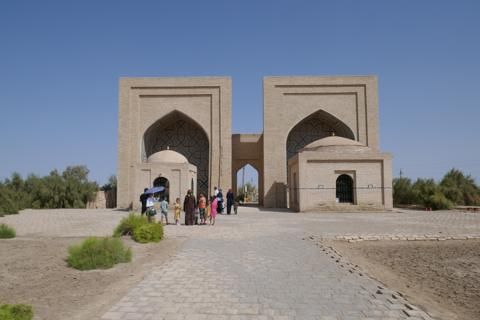
Following on from my post on Ashgabat, we had actually arrived in Turkmenistan a few days earlier across a land border from Bukhara in Uzbekistan. It took some time to navigate the complicated entry requirements - very convoluted and disorganised. But at last we had arrived in this mysterious country.
Since covid the roads had deteriorated and with the war in Ukraine all heavy transport travels via many of the Central Asian countries, as we’d seen in Kazakhstan. Our 3-4 hour drive to Mary was a bumpy one in SUVs - there seemed to be no rules as huge trucks hurtled past and often directly towards us; camels and cows taking no notice of the traffic. By the time we made it to Mary the sun was setting.
As you can see below completely different to Ashgabat!
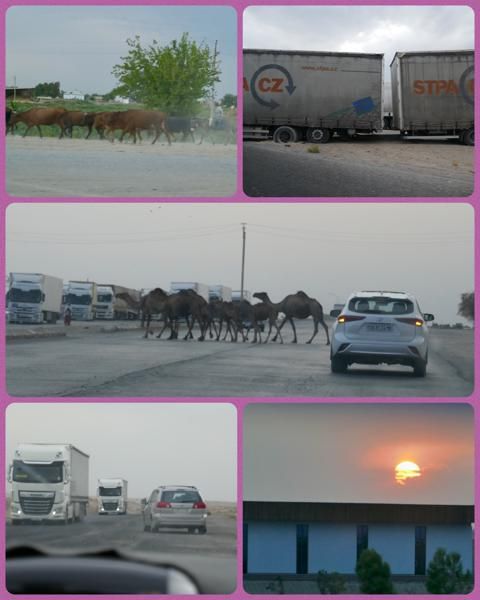
We stopped for lunch along the way in Turkmenabat, the 2nd largest city in Turkmenistan and again in Mary for dinner - we soon realised everything in this country is big - the buildings, the bill boards, the statues...
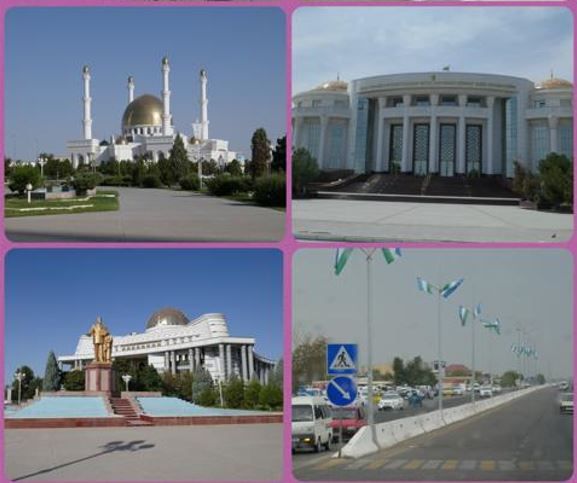
We caused quite a stir arriving at the food court in the shopping centre for lunch, the locals had not seen many Westerners!
With a better road to Mary, we changed to a coach - as you can see below displaying a sign which translated to International Visitors, also attracting local attention. Our hotel on arrival typical Russian style - large with a huge corridor and large rooms. Centre and to the right - at the shopping centre and meeting some locals. I was pleased to see toasted cheese sandwiches on the menu.
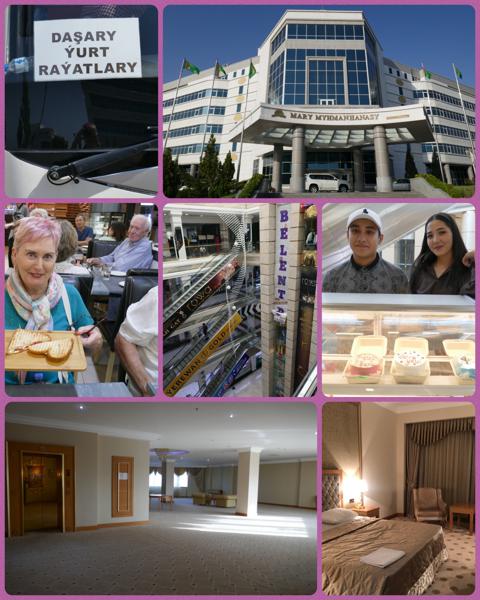
After our overnight stay in modern Mary we headed to the ancient remains of Merv - the oldest and best-preserved of the oasis-cities along the Silk Route in Central Asia, spanning 4,000 years of human history.
Merv, also known as Margiana, Margush, Mary and Marvishahjahan, translates to Queen of the World. Located on the Murghab River, the oasis town thrived, transforming it into a magnificent city that attracted intellectual greats to its centres of learning.
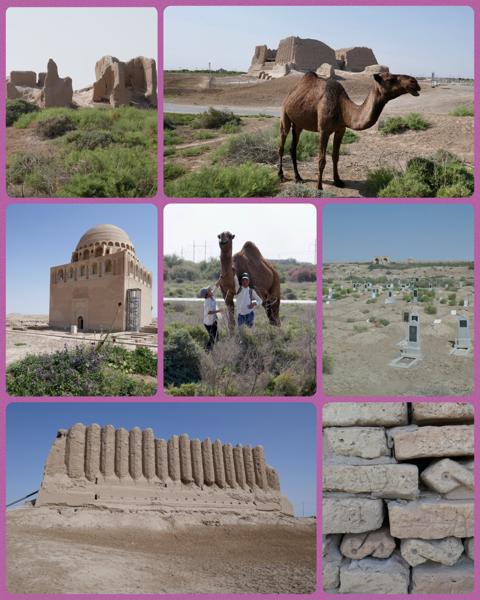
Above top 2 and bottom 2 images -Greater Kyz Kala and Lesser Kyz Kala, monumental mud brick mini castles - unusually shaped walls up to 15 meters high resemble oversized accordions. Believed to have been constructed in the 6th or 7th centuries, modern researchers have yet to determine the meaning behind their shape.
Centre left: Mausoleum of Sultan Sanjar. The best remaining testimony to Seljuk power. Sanjar, grandson of Alp-Arslan (2nd sultan of the Seljuk Empire and great-grandson of Seljuk, founder of the dynasty) died in 1157, reputedly of a broken heart when, after escaping from captivity in Khiva, he came home to find that his beloved Merv had been pillaged by Turkic nomads.
Camels linger - shepherded by young boys and a cemetery.
In its heyday, Merv was appointed capital of the Seljuk Empire (a Turkish state which dominated the Middle East and Central Asia in the 11th and 12th centuries), for a time the most renowned and may have been the most populous city on earth.
Remains from five ancient settlements have been discovered on the territory of Ancient Merv.
Here, the Great Silk Road branched north to Bukhara, west to The Caspian Sea and south to Iran, enabling an exchange of cultures among travellers, absorbing many foreign ideas into the fabric of its own society.
The tolerance of Merv’s rulers was possibly one of its keys to prosperity, longevity and where diverse ethnicities of all the major world religions at that time – Zoroastrianism, Buddhism, Christianity and Islam – found refuge, each leaving an enduring mark on the land.1
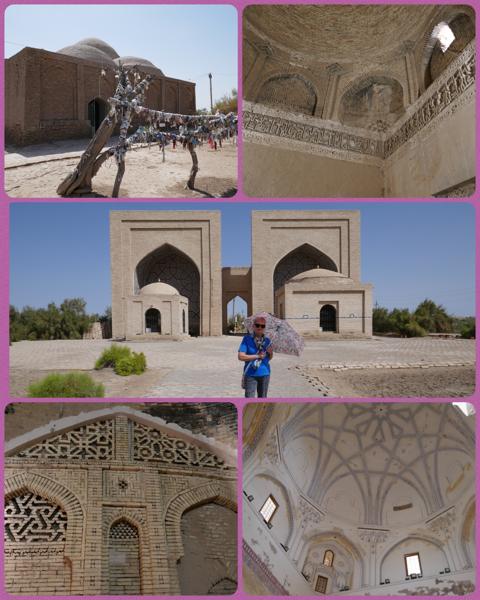
Above: top: Mausoleum of Muhammad ibn Zayd - an 8th and 9th century Shi'ite cleric who worked to spread Shi'ism to the whole of Iraq, the Tree branch with strips of cloth resembles a Buddhist practice.
Centre: Askhab’s Complex -A Timurid-era shrine dedicated to two of the Prophet Muhammad's earliest companions.
Bottom: interiors - Mausoleum of Sultan Sanjar.
Following a change in course of the Murghab River by invading forces in the 1700s, Merv’s population was forced to abandon the city, leaving behind the fortresses, palaces, and sanctuaries - remnants of which we see today.
Join me the day after tomorrow for our final destination in Turkmenistan - Koneurgench.
Credits:
1Wikipedia
